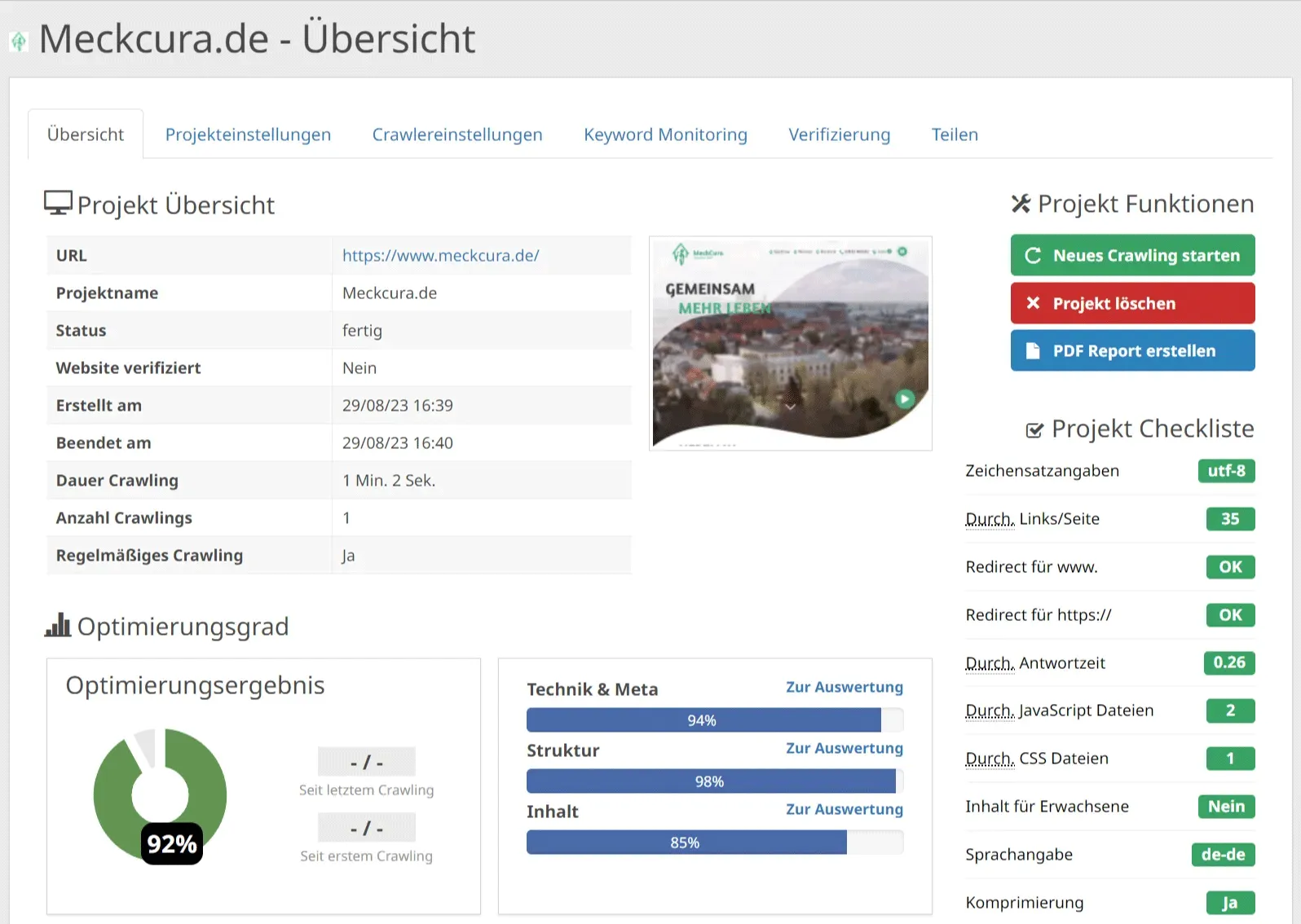It would go beyond the scope of this article to list all the individual parameters that we worked on. In a nutshell, the measure for us meant, for example, correcting the headline hierarchies: H1, H2, H3 and sometimes H4 (on each subpage). We also removed typos that Seobility pointed out to us, which neither readers like nor Google particularly appreciates. The program also included adding alt tags to all those images where we had simply forgotten to do so. Another problem for the search engine is when a word appears in the title of a page but is not repeated in the text of the same page, etc. Finally, an incomplete list of to-dos that we have worked through in terms of rough search engine optimization:
- Too long and too short page titles and H1 headings
- Meta descriptions that are too long, too short or missing
- Word repetitions in page titles
- Structural problems in the headings (H1, H2, H3, H4)
- Too long, too many, duplicate and empty strong tags
- Missing alt attributes for images
- Keywords from the page title or H1 heading do not appear in the text
- Typos
- Pages with too many or too few internal links
- Pages with a large distance to the start page (which can be reached from there with more than 4 clicks)
With a project like the nursing service website, we go through three to four rounds until all the aspects that are primarily relevant to us have been processed in the subpages that are important to us.

For larger projects such as online stores, the work can become relatively intensive in between. Then it motivates you to keep observing the percentage jumps you see in Seobility after you have corrected a few sub-areas. You check the tool every day out of curiosity and let the crawler check the domain every few hours to see if the percentage value is increasing and correcting upwards. A really good feeling. And it is precisely this gamification approach of the SEO software that helps us in SEO sprints to stay on the ball every day and feverishly work out the next percentage jumps.
The bottom line is that such a clean-up is also and above all a kind of quality assurance. In projects, redirects that no longer work, 404 pages, duplicate pages etc. are repaired and the content is also made easily accessible and prioritized for users and search engines.


